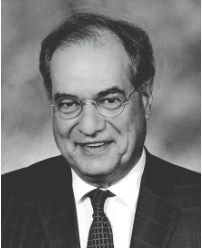Dear Fellow Stockholder:
I am pleased to present the 2021 Allison Transmission Holdings, Inc., or Allison, proxy statement, which contains information about Allison’s strategic direction, corporate responsibility and sustainability efforts, executive compensation, governance and Board of Directors’ composition. It is my pleasure, along with our Board of Directors, or Board, to invite you to the 2021 annual meeting of stockholders, or the Annual Meeting, of Allison. This year’s meeting will be held on Wednesday, May 5, 2021 at 11:00 a.m. Eastern Time. Due to concerns relating to the coronavirus pandemic (COVID-19), and to support the health and well-being of our stockholders, we will have a virtual-only Annual Meeting in 2021, conducted exclusively via live webcast at www.virtualshareholdermeeting.com/ALSN2021. There will not be a physical location for our Annual Meeting, and you will not be able to attend the meeting in person.
You will find information regarding the business to be conducted at the Annual Meeting in the attached Notice of 2021 Annual Meeting of Stockholders and Proxy Statement, including information you should consider when you vote your shares. We are sending our stockholders a Notice of Internet Availability of Proxy Materials, our 2020 Annual Report to Stockholders and other proxy materials via the Internet. This electronic process gives you fast, convenient access to the materials, diminishes our impact on the environment and reduces our printing and mailing costs. A paper copy of these materials can be requested using one of the methods described in the materials.
Whether or not you plan to attend the Annual Meeting, your vote is important, and we encourage you to vote promptly. You may vote your shares by telephone, via the Internet or, if you received a paper copy of the proxy materials, by signing, dating and returning your proxy card or voting instruction form.
Our Board unanimously recommends that you vote:
(1)
| “FOR” the election of the nine director nominees named in this proxy statement; |
(2)
| “FOR” the ratification of the appointment of PricewaterhouseCoopers LLP as our independent registered public accounting firm for 2021; and |
(3)
| “FOR” the approval of, in an advisory non-binding vote, the compensation paid to our named executive officers. |
2020 was an unprecedented year. Severe disruptions to the global economy as a result of the COVID-19 pandemic led to substantial volatility in demand for our products and considerable labor and supply chain constraints. Despite these challenges, Allison was able to maintain the uninterrupted delivery of our products, and the generation of earnings and positive cash flow, thanks to the commitment, dedication and resilience of Allison’s employees, customers, suppliers and communities.
As we continue to navigate this critical period, our priority remains the health and well-being of Allison’s extended family. Safety measures and precautions that have been implemented throughout the pandemic remain in place today, and Allison is now providing onsite COVID-19 testing to our employees in Indianapolis.
Also during 2020, Allison settled a total of $225 million of share repurchases, or over 5 percent of outstanding shares, and completed an opportunistic refinancing of our long-term debt, resulting in anticipated annual savings of $13 million in cash interest expense, with the earliest maturity due in 2026.
We also engaged in prudent cost management efforts throughout the year while continuing to fund significant investments in engineering – research and development, and capital expenditures in an effort to position Allison to capitalize on growth opportunities across all of our end markets for years to come.
I appreciate your continued interest in and support of our Company and look forward to speaking to you at the Annual Meeting.
Sincerely,
David S. Graziosi
President and Chief Executive Officer

















